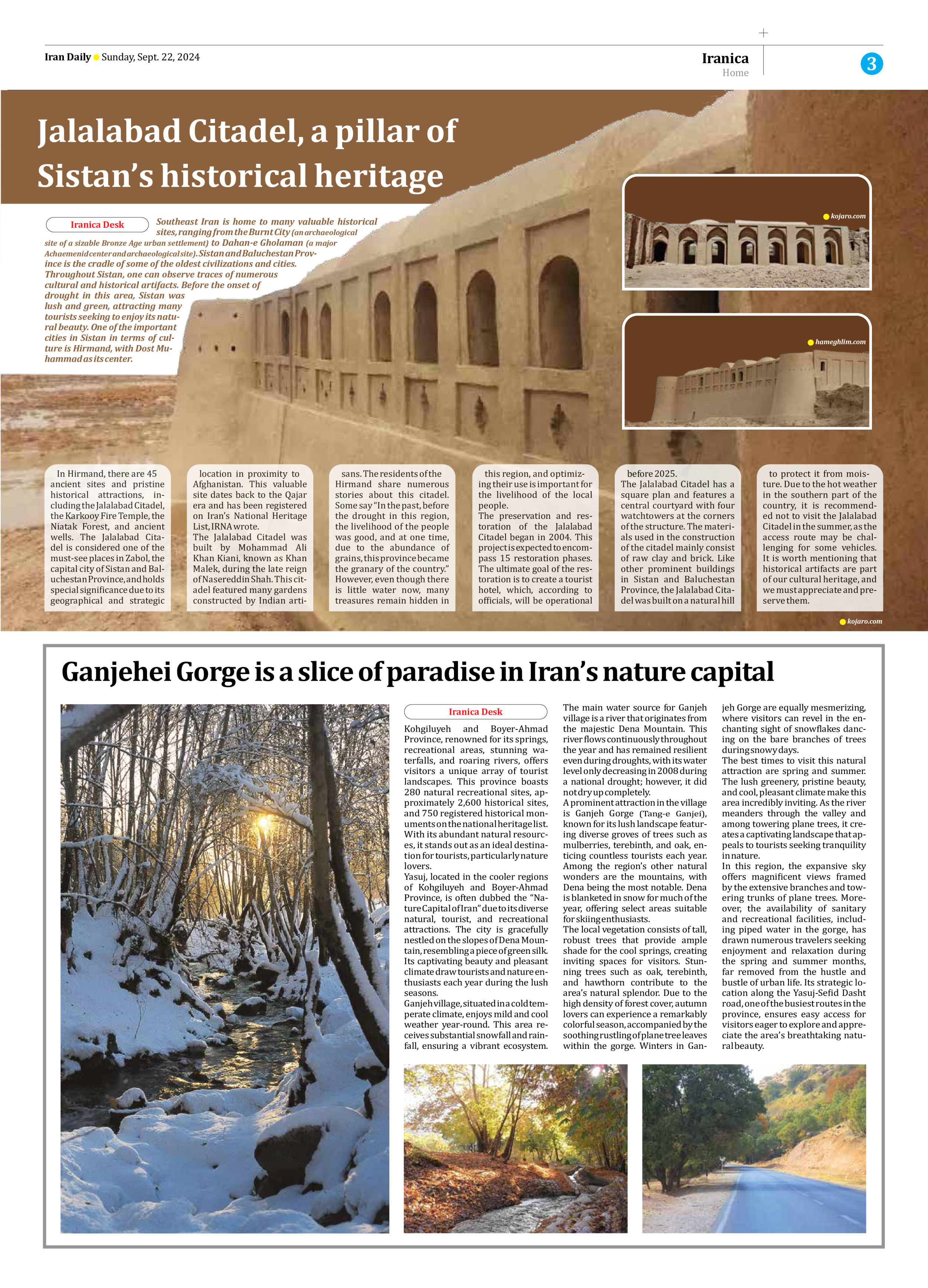
Jalalabad Citadel, a pillar of Sistan’s historical heritage
Southeast Iran is home to many valuable historical sites, ranging from the Burnt City (an archaeological site of a sizable Bronze Age urban settlement) to Dahan-e Gholaman (a major Achaemenid center and archaeological site). Sistan and Baluchestan Province is the cradle of some of the oldest civilizations and cities. Throughout Sistan, one can observe traces of numerous cultural and historical artifacts. Before the onset of drought in this area, Sistan was lush and green, attracting many tourists seeking to enjoy its natural beauty. One of the important cities in Sistan in terms of culture is Hirmand, with Dost Muhammad as its center.
In Hirmand, there are 45 ancient sites and pristine historical attractions, including the Jalalabad Citadel, the Karkooy Fire Temple, the Niatak Forest, and ancient wells. The Jalalabad Citadel is considered one of the must-see places in Zabol, the capital city of Sistan and Baluchestan Province, and holds special significance due to its geographical and strategic location in proximity to Afghanistan. This valuable site dates back to the Qajar era and has been registered on Iran’s National Heritage List, IRNA wrote.
The Jalalabad Citadel was built by Mohammad Ali Khan Kiani, known as Khan Malek, during the late reign of Nasereddin Shah. This citadel featured many gardens constructed by Indian artisans. The residents of the Hirmand share numerous stories about this citadel. Some say “In the past, before the drought in this region, the livelihood of the people was good, and at one time, due to the abundance of grains, this province became the granary of the country.” However, even though there is little water now, many treasures remain hidden in this region, and optimizing their use is important for the livelihood of the local people.
The preservation and restoration of the Jalalabad Citadel began in 2004. This project is expected to encompass 15 restoration phases. The ultimate goal of the restoration is to create a tourist hotel, which, according to officials, will be operational before 2025.
The Jalalabad Citadel has a square plan and features a central courtyard with four watchtowers at the corners of the structure. The materials used in the construction of the citadel mainly consist of raw clay and brick. Like other prominent buildings in Sistan and Baluchestan Province, the Jalalabad Citadel was built on a natural hill to protect it from moisture. Due to the hot weather in the southern part of the country, it is recommended not to visit the Jalalabad Citadel in the summer, as the access route may be challenging for some vehicles. It is worth mentioning that historical artifacts are part of our cultural heritage, and we must appreciate and preserve them.







